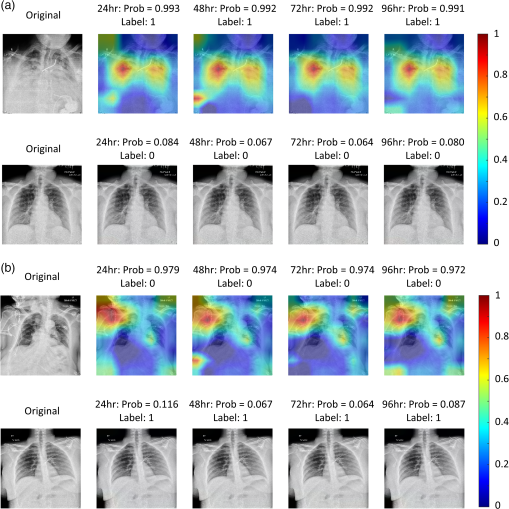The coronavirus disease 2019 (COVID-19) is an ongoing pandemic caused by severe acute respiratory syndrome coronavirus 2, which was first reported in late 2019. As of June 28, 2023, there have been 767,518,723 confirmed cases of COVID-19, including 6,947,192 deaths. The reverse transcription polymerase chain reaction (RT-PCR) is the reference standard currently used for COVID-19 disease diagnosis. In addition, clinical assessment and multimodality medical imaging are also used in disease diagnosis and patient management.
The purpose of this study was to develop an AI/ML COVID-19 prognosis method to predict patients’ need for intensive care by analyzing CXR images of COVID-19–positive patients using deep learning with a sequential transfer learning strategy.
A limited deidentified dataset was retrospectively collected from our institution under a Health Insurance Portability and Accountability Act (HIPAA)-compliant, Institutional Review Board-approved protocol during the COVID-19 outbreak, consisting of CXR exams acquired between Feb 27, 2020 and January 21, 2022. From patients who underwent the RT-PCR test for the SARS-CoV-2 virus, CXR exams and clinical data were collected after the initial RT-PCR tests.
The dataset consisted of 8357 CXR exams from 5046 COVID-19–positive patients as confirmed by reverse transcription polymerase chain reaction (RT-PCR) tests for the SARS-CoV-2 virus with a training/validation/test split of 64%/16%/20% on a by patient level. Our model involved a DenseNet121 network with a sequential transfer learning technique employed to train on a sequence of gradually more specific and complex tasks:

(1) fine-tuning a model pretrained on ImageNet using a previously established CXR dataset with a broad spectrum of pathologies;
(2) refining on another established dataset to detect pneumonia; and
(3) fine-tuning using our in-house training/validation datasets to predict patients’ needs for intensive care within 24, 48, 72, and 96 h following the CXR exams.
The classification performances were evaluated on our independent test set (CXR exams of 1048 patients) using the area under the receiver operating characteristic curve (AUC) as the figure of merit in the task of distinguishing between those COVID-19–positive patients who required intensive care following the imaging exam and those who did not.
The proposed AI/ML model achieved an AUC (95% confidence interval) of 0.78 (0.74, 0.81) when predicting the need for intensive care 24 h in advance, and at least 0.76 (0.73, 0.80) for 48 h or more in advance using predictions based on the AI prognostic marker derived from CXR images.
This AI/ML prediction model for patients’ needs for intensive care has the potential to support both clinical decision-making and resource management.
The authors are grateful to Feng Li, MD, PhD, for the scientific discussion. This work was partially supported by an award from the C3.AI Digital Transformation Institute, the National Institute of Biomedical Imaging and Bioengineering (NIBIB) COVID-19 (Contract No. 75N92020D00021), and the National Institutes of Health (NIH) Shared Instrument Grant (S10 OD025081).







































































